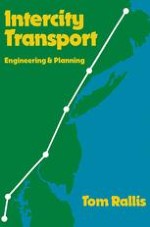
1977 | OriginalPaper | Buchkapitel
Transport Evolution
verfasst von : Tom Rallis
Erschienen in: Intercity Transport
Verlag: Macmillan Education UK
Enthalten in: Professional Book Archive
Aktivieren Sie unsere intelligente Suche, um passende Fachinhalte oder Patente zu finden.
Wählen Sie Textabschnitte aus um mit Künstlicher Intelligenz passenden Patente zu finden. powered by
Markieren Sie Textabschnitte, um KI-gestützt weitere passende Inhalte zu finden. powered by
Even if the hunting and agricultural life 15 000–10 000 years ago used the sledge and the canoe, it was not until 3000 b.c. that land and water transport really advanced, through the horsedrawn carriage and the sailing boat. Roads, canals and harbours could now be used for passenger and freight transport. Cities effected a mobilisation of manpower and communication over long distances in space and time, because of the developments in agricultural productivity. In particular, miners, merchants, soldiers and priests were travelling widely. Cities were built in great river valleys: on the Indus and the Ganges rivers in India, on the Nile and the Euphrates and Tigris rivers in the west and on the Hwang Ho in the east. World trade between these districts began because India was rich in food and spices, but poor in metals. Transport made it possible to distribute surplus products and to obtain access to distant markets. Urban markets provided the means of procurement, storage, and distribution. Other dynamic elements were the wars and the pilgrimages which were early mass transport systems. Some important cities had a precinct sacred to the gods, with ancient burial pits and sacred shrines and memorials to which pilgrims made their journeys from distant places.1,2 Powerful cities extended their frontiers and destroyed people who might block their trade routes.